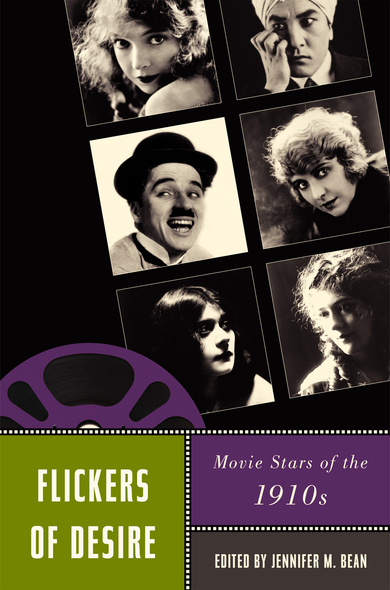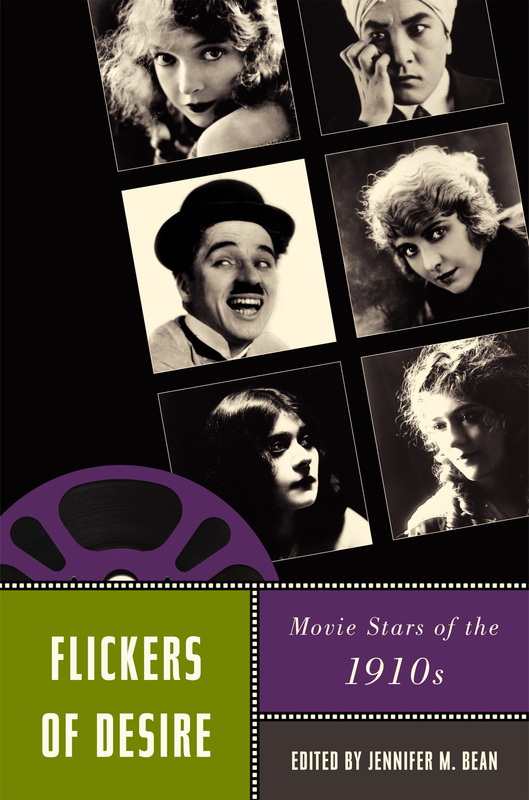Today, we are so accustomed to consuming the amplified lives of film stars that the origins of the phenomenon may seem inevitable in retrospect. But the conjunction of the terms "movie" and "star" was inconceivable prior to the 1910s. Flickers of Desire explores the emergence of this mass cultural phenomenon, asking how and why a cinema that did not even run screen credits developed so quickly into a venue in which performers became the American film industry's most lucrative mode of product individuation. Contributors chart the rise of American cinema's first galaxy of stars through a variety of archival sources--newspaper columns, popular journals, fan magazines, cartoons, dolls, postcards, scrapbooks, personal letters, limericks, and dances. The iconic status of Charlie Chaplin's little tramp, Mary Pickford's golden curls, Pearl White's daring stunts, or Sessue Hayakawa's expressionless mask reflect the wild diversity of a public's desired ideals, while Theda Bara's seductive turn as the embodiment of feminine evil, George Beban's performance as a sympathetic Italian immigrant, or G. M. Anderson's creation of the heroic cowboy/outlaw character transformed the fantasies that shaped American filmmaking and its vital role in society.
Finally, in the ongoing series 'Star Decades,' arrives the volume on the delightful and original decade of the 1910s--a book that takes the reader back to yesteryear for the earliest luminaries of the celestial Hollywood heavens, even before Hollywood. Bean wraps up this fascinating study of the historical evolution of these cinematic icons with previews of coming stars. Highly recommended.
Jennifer M. Bean is the director of the cinema studies program and an associate professor of comparative literature at the University of Washington. She is coeditor of A Feminist Reader in Early Cinema and a recipient of the prestigious Katherine Singer Kovacs Essay Award from the Society for Cinema and Media Studies.
Acknowledgments
Introduction
1. G. M.Anderson: “Broncho Billy” among the Early “Picture Personalities”
2. Mary Pickford: Icon of Stardom
3. Lillian Gish: Clean, and White, and Pure as the Lily
4. Sessue Hayakawa:The Mirror, the Racialized Body, and Photogénie
5. Theda Bara: Orientalism, Sexual Anarchy, and the Jewish Star
6. Geraldine Farrar:A Star from Another Medium
7. George Beban: Character of the Picturesque
8. Pearl White and Grace Cunard:The Serial Queen’s Volatile Present
9. Roscoe “Fatty” Arbuckle: Comedy’s Starring Scapegoat
10. Douglas Fairbanks: Icon of Americanism
11. Charles Chaplin:The Object Life of Mass Culture
In the Wings
Works Cited
Contributors
Index
Introduction
1. G. M.Anderson: “Broncho Billy” among the Early “Picture Personalities”
2. Mary Pickford: Icon of Stardom
3. Lillian Gish: Clean, and White, and Pure as the Lily
4. Sessue Hayakawa:The Mirror, the Racialized Body, and Photogénie
5. Theda Bara: Orientalism, Sexual Anarchy, and the Jewish Star
6. Geraldine Farrar:A Star from Another Medium
7. George Beban: Character of the Picturesque
8. Pearl White and Grace Cunard:The Serial Queen’s Volatile Present
9. Roscoe “Fatty” Arbuckle: Comedy’s Starring Scapegoat
10. Douglas Fairbanks: Icon of Americanism
11. Charles Chaplin:The Object Life of Mass Culture
In the Wings
Works Cited
Contributors
Index






